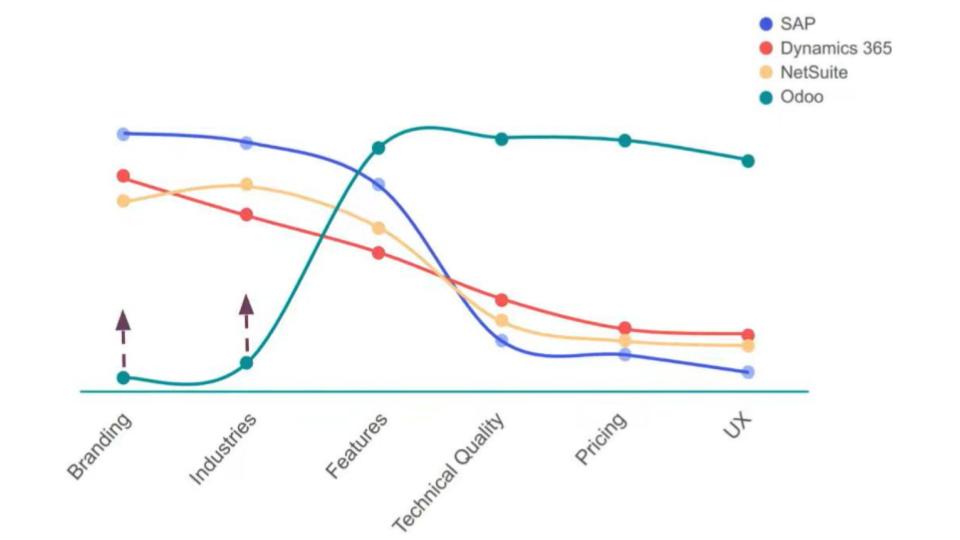Ten years ago, few had heard of Odoo. Today, it runs inside more than 137,000 businesses – and not because it chased the Fortune 500.
Odoo doesn’t try to be like the other ERP giants. While legacy vendors focus on big enterprise deals and feature-heavy software suites, Odoo follows a different path: build a flexible, integrated, and affordable system that is accessible to companies of varying sizes.
It’s a recipe that has proven successful: Odoo has quietly become one of the most widely adopted business software platforms in the world, now used across 175 countries.
A different kind of ERP
Odoo takes a modular approach that sets it apart from many traditional ERP systems. Instead of an all-or-nothing suite, the platform offers a range of applications – covering everything from finance to CRM to HR – that can be used individually or as a fully integrated system.
It’s also more flexible in how it’s deployed. Companies can host it themselves or use the cloud version. The system is built on open APIs rather than proprietary formats, which makes it easier to extend, integrate, or customise as needed.

This combination of modularity, openness, and deployment choice has made Odoo a more accessible option for businesses that want to avoid vendor lock-in or heavyweight implementations. It’s part of why the platform is often seen as easier to adopt and faster to roll out than most of its competitors.
Odoo is built for people, not power users
Many ERP systems prioritise functionality over user experience, resulting in tools that are powerful on paper but difficult to navigate in practice. Odoo takes the opposite approach. Its interface is designed to be intuitive and efficient, with minimal clicks and a layout that most users can pick up without formal training.
The system is accessible even to non-technical teams, and that reduces the need for external consultants during rollout. That ease of use is one reason why Odoo appeals not just to IT departments, but also to operational teams who interact with the software every day.
Instead of major version overhauls, Odoo ships updates frequently – about 55 per year – focusing on small, continuous improvements. This development cycle helps refine the interface and workflows without disrupting the user base.
Who uses Odoo?
Odoo’s core user base is small to medium-sized businesses (20 - 1,000 employees), though the platform has also been adopted by startups, NGOs, and some larger enterprises. In most cases, companies are drawn to Odoo either to consolidate scattered tools or to move away from legacy systems that have become too rigid or expensive to maintain.
- Over 11M+ users of the Community edition
- 1.4M+ users of Odoo Enterprise
- Active in 175 countries
- €500M in 2025 revenue with a €5B valuation
A shifting market
The ERP market is no longer as static as it once was. While SAP, Oracle, and Microsoft continue to lead in revenue, their grip is loosening. Long implementation times and complex pricing have created space for newer platforms to grow.
Odoo is one of several systems benefiting from that shift. Others, like NetSuite and Xero, have found traction in specific regions or industries. But Odoo’s modular setup, low barrier to entry, and open infrastructure have helped it scale faster and more widely.
Where Odoo wins, and where it doesn’t (yet)
Odoo excels in architecture, usability, price-performance, and scope. It’s also ahead when it comes to flexibility: no lock-in, no required hosting, and an open-source foundation that allows for free customisation.
Due to its status as a newcomer in ERP, it’s still not as competitive in two areas:
industry-specific features and brand awareness. While Odoo has strong horizontal coverage, many verticals still require extra configuration or third-party modules. And while it’s widely adopted, it doesn’t have the brand power of names like SAP or Microsoft – yet.

Odoo’s position in a line-up of competitors (from a keynote by Odoo CEO Fabien Pinckaers)
Letting the product do the talking
Odoo’s leadership doesn’t aim to be the loudest in the market. In a recent keynote, founder Fabien Pinckaers described the company as focused on practical outcomes. A system that can be shaped to fit, used without friction, and maintained without long-term lock-in.
Area | Odoo |
Architecture | Modern, modular, open-source |
Features | Broadest scope in its class |
Pricing | Transparent, affordable, scalable |
Usability | Top-rated for user experience |
Industry specificity | Still developing in some verticals |
Brand awareness | Quickly catching up to legacy players |

Ready to make the switch? Talk to our Odoo experts!
Whether you’re replacing legacy software or starting fresh, we help businesses set up Odoo the right way - from first steps to full implementation.Book a free 1-hour consultation